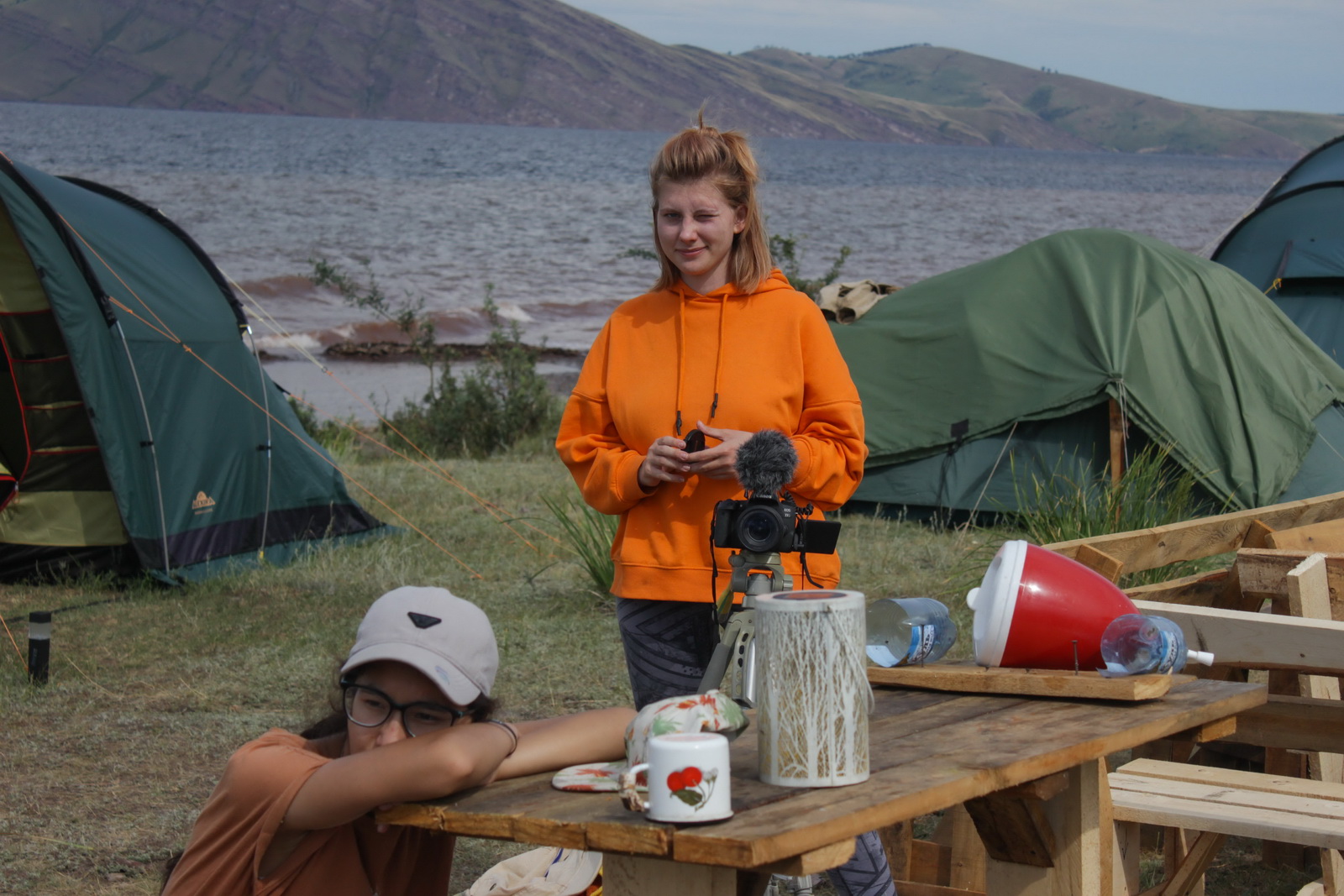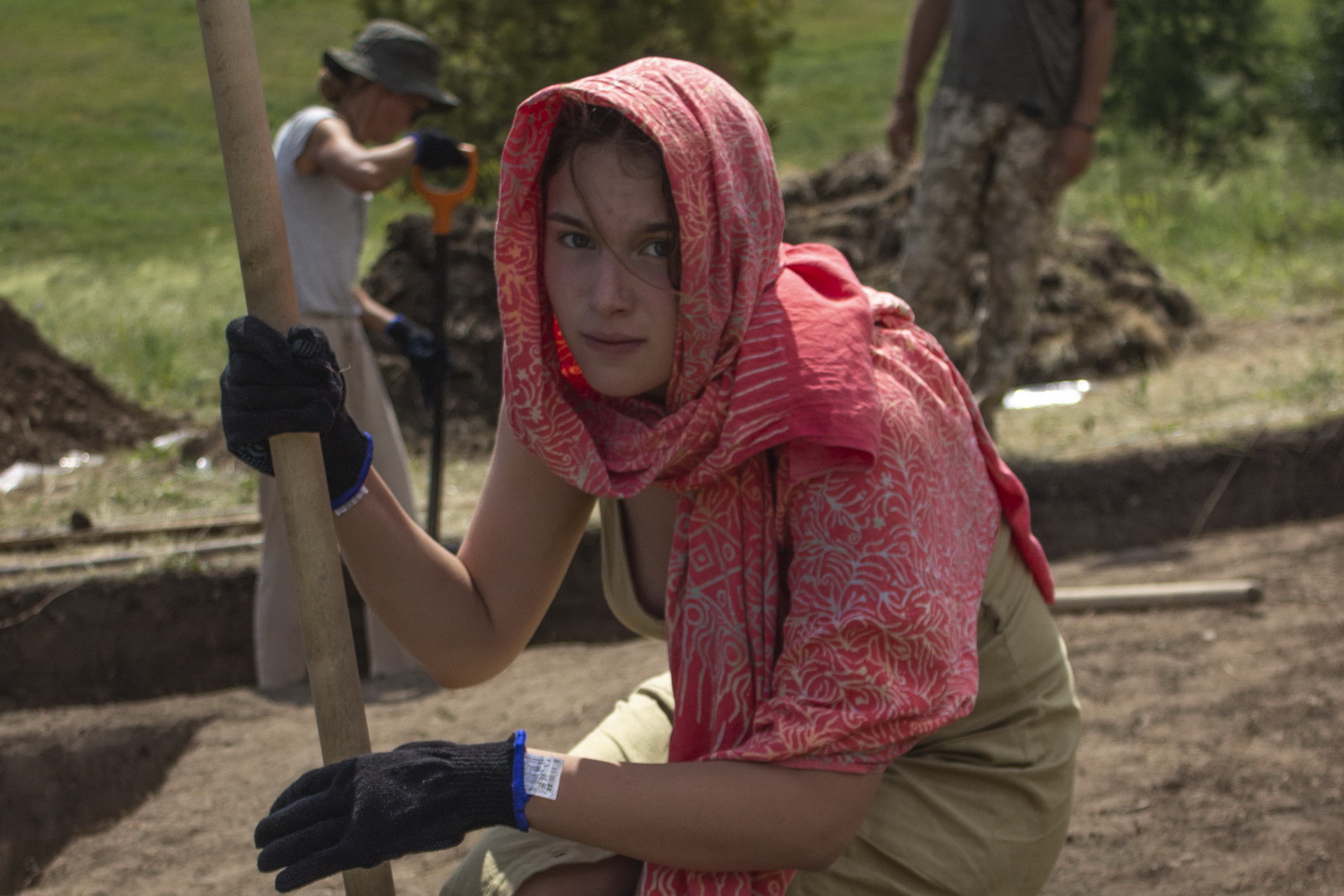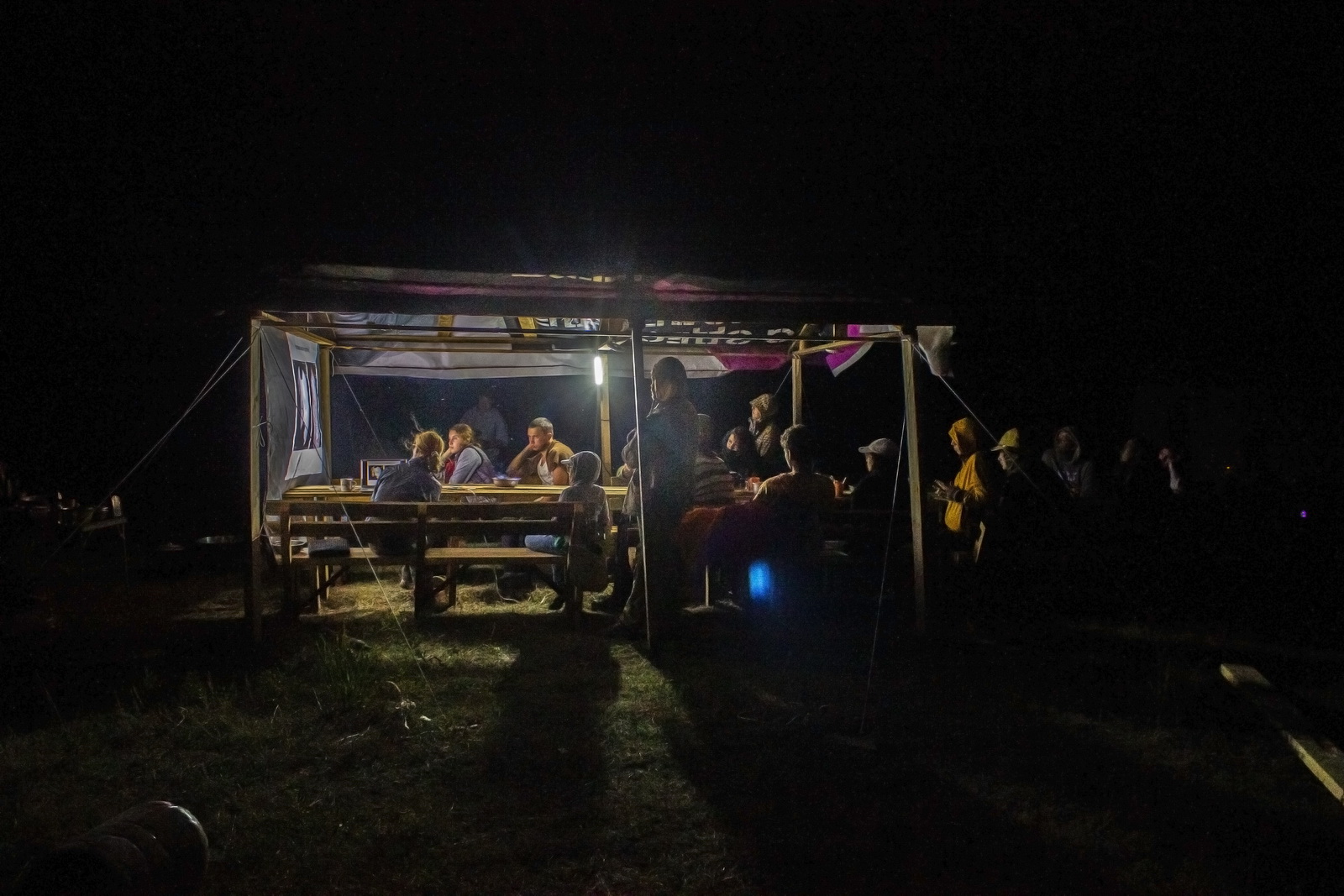After a year of pandemic, TSU Higher School of Journalism students had an opportunity for training in the field. They are participating in the archaeology project "The Heritage of the Oglakhty Range Through Time and Space", collecting the content for a media project on the results of this expedition and for press releases and working directly on the excavation.
The journalists are living together with all the other participants of the expedition by TSU and the State Hermitage Museum in a campsite on the shore of the Krasnoyarsk Reservoir near the Oglakhty range in Khakassia.
"Most of all I like the sincere excitement of archaeologists at the findings. 'It's a cloth! Have you seen this cloth?' When I hear this, I run from one dig to another to tell the rest about the discovery. This excitement makes every found object feel like mine, like I found it and dug it out myself, even though I was only sitting there with a camera," says Maria Rudneva, a third-year student of TSU Faculty of Journalism and a documentary video maker.

The Oglakhty burial mound expedition was organized by the TSU laboratory Artefact and the State Hermitage Museum with TSU Department of Anthropology and Ethnology.
The 2021 expedition is unique because during the excavation of Tashtyk archaeological culture the archaeologists found rare objects such as wooden utensils, fragments of cloth, and a plaster burial mask. This set of objects had not been found in a burial mound since the 1960s. The woman whose grave was found even still has some skin remnants.
"What surprised me the most is that gold is not sought-after here. Wood here was worth more than metal," says Varvara Slepkova, a second-year student at TSU Faculty of Journalism. "It was very hard to dig, you have to be very accurate and neat in doing it. It was a mystery to me how archaeologists manage to do it. Olga Zaytseva (head of the expedition) had to explain to me several times how to use a brush to expose found objects properly. For example, it's important not to brush the same place twice, as the material is very fragile."

In addition to their main work, the journalists help out in the kitchen and with cleaning. In their free time, "local press" lounges on the shore, swims in the Krasnoyarsk Reservoir, and exchanges experience with students from the Faculty of Historical and Political Sciences and RIA Tomsk journalist Andrei Sokolov.
"We have accidentally accumulated a unique team of journalists here. The students passionately participate in excavation and the life of the camp. We plan to create a multimedia project 'The Heritage of the Oglakhty Range Through Time and Space' based on the results of this expedition. I am sure that with a team like that, we can do it," said Andrei Sokolov.
TSU Higher School of Journalism plans to release a multimedia project on the Oglakhty Range burial mound in Spring 2022.
As previously reported, TSU and the State Hermitage Museum are conducting a joint excavation of the Oglakhty burial mound (Khakassia, Russian Federation). Besides digging, the research is done by aerial mapping and subsequent 3D-modeling of the area and by methods of geography and physics. In 2021, the project was supported by the Presidential grant "The Heritage of the Oglakhty Range Through Time and Space"
Written by: Alexandra Gaaze, Faculty of Journalism. Photo by: Sofya Starodubova, Faculty of Journalism.







